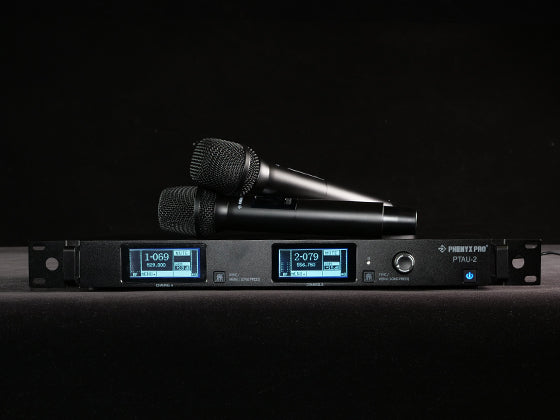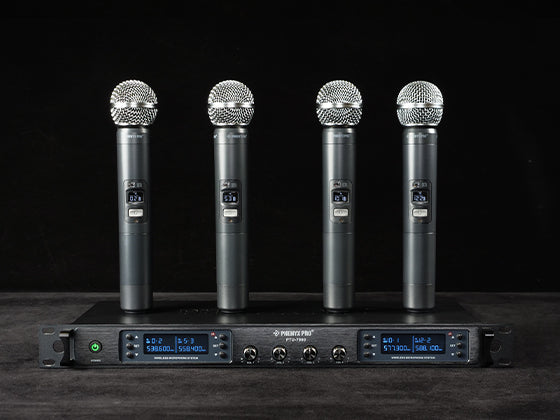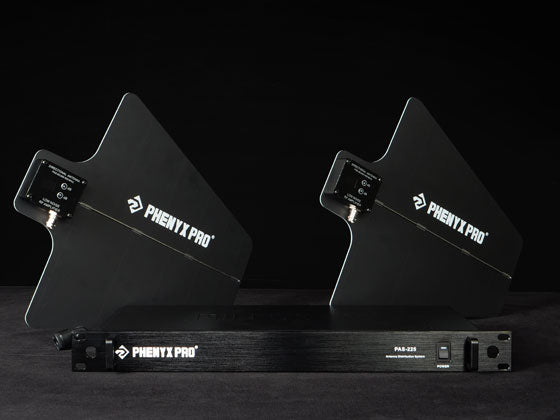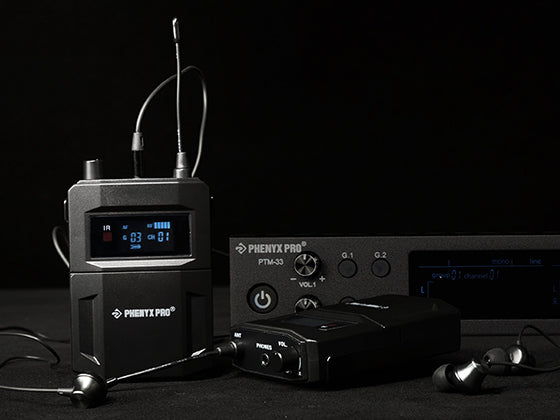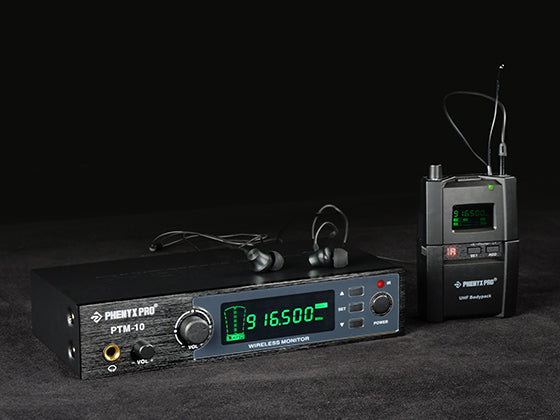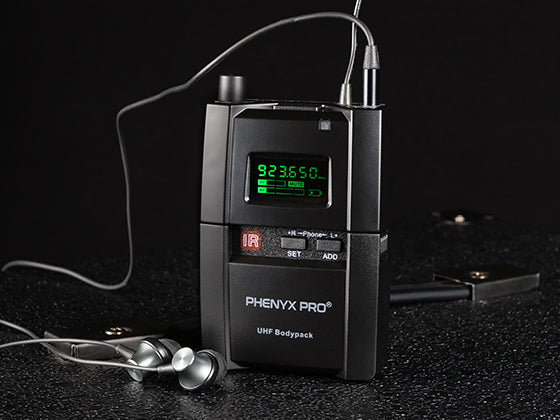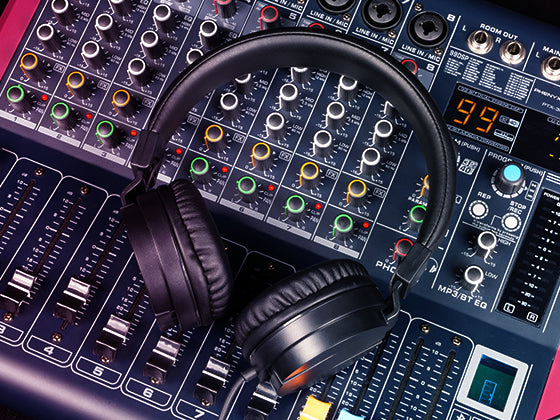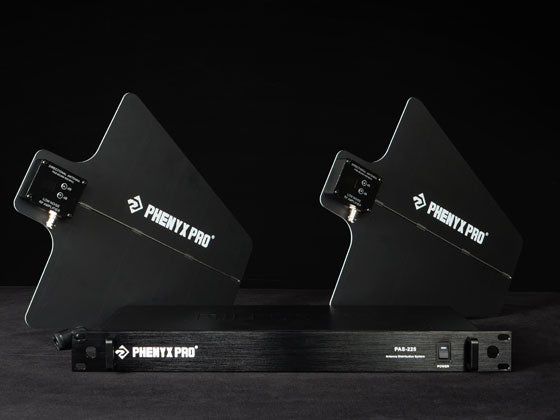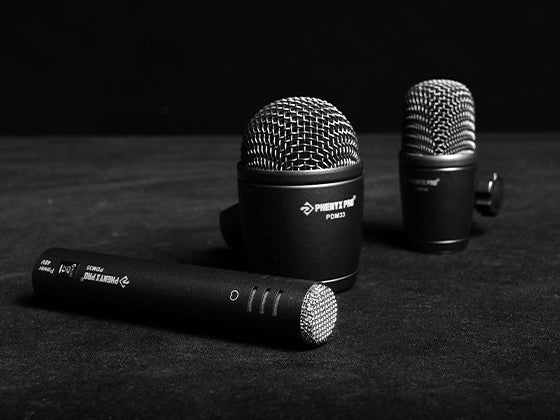Mastering the Stage:
Exploring the Benefits and Technology of Wireless In-Ear Monitoring Systems
This article explores the essential benefits of wireless IEM systems, explains their underlying principles, addresses technical challenges, and examines various usage scenarios. We will also discuss Phenyx Pro's upcoming innovations in wireless IEM technology, ensuring that your stage presence continues to soar to new heights.

Table of Contents
- Why Choose Wireless IEM Systems?
- Basic Principles of Wireless Monitoring
- Technical Challenges of Wireless Monitoring
- Application Scenarios for Wireless Monitoring
- Upcoming Phenyx Pro IEM Product
- Conclusion
Why Choose Wireless IEM Systems?
Choosing the right monitoring system for live performances can make or break your stage experience. Traditional floor monitors, though dependable, can introduce feedback and noise, complicating the setup process. In contrast, wireless in-ear monitoring (IEM) systems provide exceptional clarity and flexibility, enabling each band member to clearly hear both the overall mix and their individual parts. These transformative benefits make wireless IEM systems indispensable for musicians to effectively display their skills and enhance their performances. Below are the key reasons why wireless IEM systems excel over traditional monitors:
Enhanced Mobility and Freedom
Traditional Monitors: Limited mobility. Floor monitors are stationary, which can restrict performers' movement on stage. Musicians and vocalists often find themselves confined to a specific area to hear their mix, potentially compromising the dynamism of their stage presence.
Wireless IEM Systems: Unparalleled freedom. They remove the constraints of wired equipment, enabling performers to move freely across the stage without the encumbrance of cables. This newfound freedom enhances the expressiveness and interaction of the performance, empowering musicians to play with greater creativity and dexterity, thereby enhancing the overall visual and auditory experience.

Superior Sound Quality
Traditional Monitors: Variable sound quality. The sound from floor monitors can be compromised by stage acoustics, audience noise, and interference from other sound sources, resulting in inconsistencies and a risk of feedback. These factors can detract from the performance quality and lessen the audience's enjoyment.
Wireless IEM Systems: A direct and isolated audio feed ensures pristine and consistent sound quality. The clarity of the audio feedback significantly enhances on-stage sound monitoring and management. Performers can discern every nuance of their performance without any interference, which contributes to more accurate and confident execution.
Customized Personal Mixes
Traditional Monitors: Lack of personalized mixes. raditional monitors provide a generic mix for all performers on stage, which can be challenging to adapt to individual preferences. Adjustments to the mix may not meet everyone's needs, necessitating a higher level of professionalism from each performer to accurately monitor their own sound.
Wireless IEM Systems: Tailored personal mixes. Performers and sound engineers can monitor and adjust audio in real-time, ensuring a high level of quality and consistency. Musicians have the ability to fine-tune the volume levels of various instruments and vocals, crafting a mix that enhances their overall performance.

Reduced Stage Clutter
Traditional Monitors: Cluttered and bulky setup. Floor monitors are large and require multiple wedges, extensive cabling, and additional equipment, which can lead to a congested stage environment that poses a potential safety hazard. This configuration not only complicates the logistics of stage arrangements but also detracts from the visual appeal of the performance space.
Wireless IEM Systems: Streamline the stage layout by eliminating the need for floor monitors, significantly reducing the amount of equipment on stage. This results in a cleaner and safer stage setup, minimizing the risk of accidents caused by tripping over cables and other obstacles.
Hearing Protection
Traditional Monitors: Potential hearing damage. To overcome the noise from the stage and audience, floor monitors typically require high volume levels, which may lead to hearing impairment over time for performers.
Wireless IEM Systems: Safeguard hearing with controlled sound levels delivered directly to the performers' ears, mitigating the risk of hearing damage. Custom-molded earpieces provide enhanced hearing protection by effectively blocking out external noise.
Overall, wireless IEM systems outshine traditional floor monitors in a multitude of aspects. They offer performers enhanced mobility, superior sound clarity, customized mixes, a streamlined stage setup, and superior hearing protection. These advantages make wireless IEM systems an indispensable tool for modern performers seeking to elevate their stage presence and the overall quality of their performances.
Basic Principles of Wireless Monitoring
An efficient wireless monitoring system relies on two main components: the transmitter and the receiver. The transmitter, typically connected to a mixer or instrument, converts the audio signal into an RF signal for transmission. Meanwhile, the receiver, serving as the performer’s auditory interface, captures the RF signal, decodes it, and delivers high-quality audio to the performer through earphones. This seamless process ensures high-quality audio monitoring and provides performers with complete freedom on stage.

Modern wireless systems feature automatic frequency scanning and synchronization to ensure optimal performance. This intelligent management of frequencies allows users to easily identify the optimal frequency band, effectively avoiding interference and ensuring a smooth performance. By understanding these fundamental principles, we can better appreciate how wireless IEM systems enhance live performances and why they are indispensable for modern performers.
Wireless monitoring systems are designed to meet a variety of performance and monitoring needs. They offer different audio transmission modes, each with unique benefits:
Mono Mode: Provides a solution for monitoring a single instrument or sound source through single audio signal transmission, particularly when spectrum resources need to be conserved. In this mode, regardless of the left or right earphones, the audio content received is consistent, simplifying the mixing process and ensuring a consistent audio experience. As showcased in our PTM-11/22/33 wireless mono monitoring series, it offers a resource-saving solution for musicians seeking focused and uniform audio transmission.

Stereo Mode: Allows the left and right earphones to receive different audio signals, delivering a rich stereo experience for performers. This mode is particularly suitable for stereo recordings or live performances requiring precise spatial positioning. Some systems, like our PTM-10, also allow you to control the relative levels between channels using the balance function. This enhances the depth and width of the audio, providing an immersive monitoring experience for performers.

Technical Challenges of Wireless Monitoring
While wireless IEM systems offer a multitude of advantages, they come with their own set of technical challenges.
Signal Stability and Interference: Wireless systems rely on RF signals, which can be susceptible to interference from other electronic devices and environmental factors. This can lead to signal drops or audio degradation, particularly during live performances. Using an antenna combiner system can reduce these interferences and extend the range of use. We are also soon launching our antenna combiner system PAS-998X to provide an even better and more stable monitoring experience.
Frequency Congestion: The simultaneous use of multiple wireless IEM systems can cause frequency congestion and potential interference, especially in close proximity, as often seen in performance settings where each performer requires their own monitoring channel. In response to this, our systems offer options in both the 500 MHz and 900 MHz bands, allowing users to select the appropriate frequency range for their specific needs. This ensures optimal performance and reduces interference, even in complex multi-user environments.
Latency: Low latency technology is crucial for wireless monitoring systems. A perceptible delay can cause performers to hear sounds that do not align with their actual performance, affecting synchronization and overall quality. Modern systems apply efficient encoding and decoding algorithms and fast signal processing technologies to significantly reduce transmission latency, achieving near-real-time audio feedback. This enables performers to accurately grasp performance timing, enhancing the professionalism and impact of their performance.
To address these challenges, Phenyx Pro's wireless IEM systems, including the PTM-10 and PTM-11/22/33 series, utilize advanced UHF technology known for its low latency and reliable performance. In contrast, other systems using 2.4 GHz digital lines may experience higher latency issues, making UHF a superior choice for real-time performance monitoring.

Application Scenarios for Wireless Monitoring
Wireless IEM systems are highly versatile and can be used in a variety of settings to enhance audio performance and quality. Below are some key scenarios where wireless monitoring proves invaluable:
Wireless Monitoring in Live Performances: In vibrant live performances, wireless monitoring systems become indispensable tools for performers. They empower singers, band members, dancers, and actors to control their voices and instruments in real-time, ensuring precision and consistency in the performance. Whether in the intimate setting of a small club or on the vast stage of a large music festival, wireless monitoring systems provide clear, interference-free, high-quality audio feedback. This not only makes the performance smoother but also fills artists with confidence in every move on stage.
Applications in Studio Production: When the scene shifts to the studio, wireless monitoring systems play an equally crucial role. They provide musicians and recording engineers with high-quality audio feedback, allowing them to focus more deeply on the creation and recording process. Artists can adjust the nuances of their performances instantly through wireless monitoring systems, while engineers can control the recording quality more precisely. The application of wireless monitoring systems significantly enhances recording efficiency and the final quality of the work, making them indispensable tools in modern recording production.
Upcoming Phenyx Pro IEM Product
Phenyx Pro is committed to enhancing the wireless monitoring systems for professional musicians and performance teams through continuous technological innovation and user-friendly design. In the future, we will introduce advanced wireless monitoring systems that utilize true diversity circuitry. These systems will capture signals through two independent receiving channels and automatically select the best signal source, significantly reducing signal loss and interference, and providing more stable and reliable audio transmission. Additionally, the new systems will integrate automatic frequency scanning capabilities, scanning all available frequencies in the current environment and automatically selecting the cleanest and most stable frequency for transmission. This feature will avoid interference and frequency conflicts, simplifying the setup process for live performances and improving the system's usability and audio performance.
In parallel, Phenyx Pro will continue to enhance the user experience by offering wireless monitoring systems with more intuitive user interfaces and simplified operational procedures. We will improve the design and comfort of wear for receivers and transmitters, ensuring that the equipment provides a comfortable and stable user experience during long performances or recording sessions. This user-friendly design not only enhances the overall user experience but also allows performers to play with more confidence and ease on stage.
Besides, we may consider integrating more advanced signal processing algorithms, improving the battery life and durability of devices, and developing smarter user interaction methods.
Conclusion
Wireless monitoring systems, with their high-quality audio transmission and flexible usage, significantly enhance performers' freedom and performance quality, making them indispensable equipment in modern music performance and production. Phenyx Pro will continue to commit to technological innovation and user experience enhancement, launching more advanced monitoring systems and promoting the development of wireless monitoring systems through the integration of cutting-edge technologies. In the future, we look forward to providing higher-quality audio solutions for musicians and performance teams worldwide, contributing to the continuous progress of the music industry.
Related Products
EXPLORE FURTHER

The Stereo Wireless IEM You Deserve
Retracing how the stand-out Phenyx Pro’s PTM-10 is acclaimed, this blog provides a comprehensive overview of this must-have wireless in-ear monitor. Now let’s explore its immersive monitoring experience and versatility to boss your monitor mix.
Learn More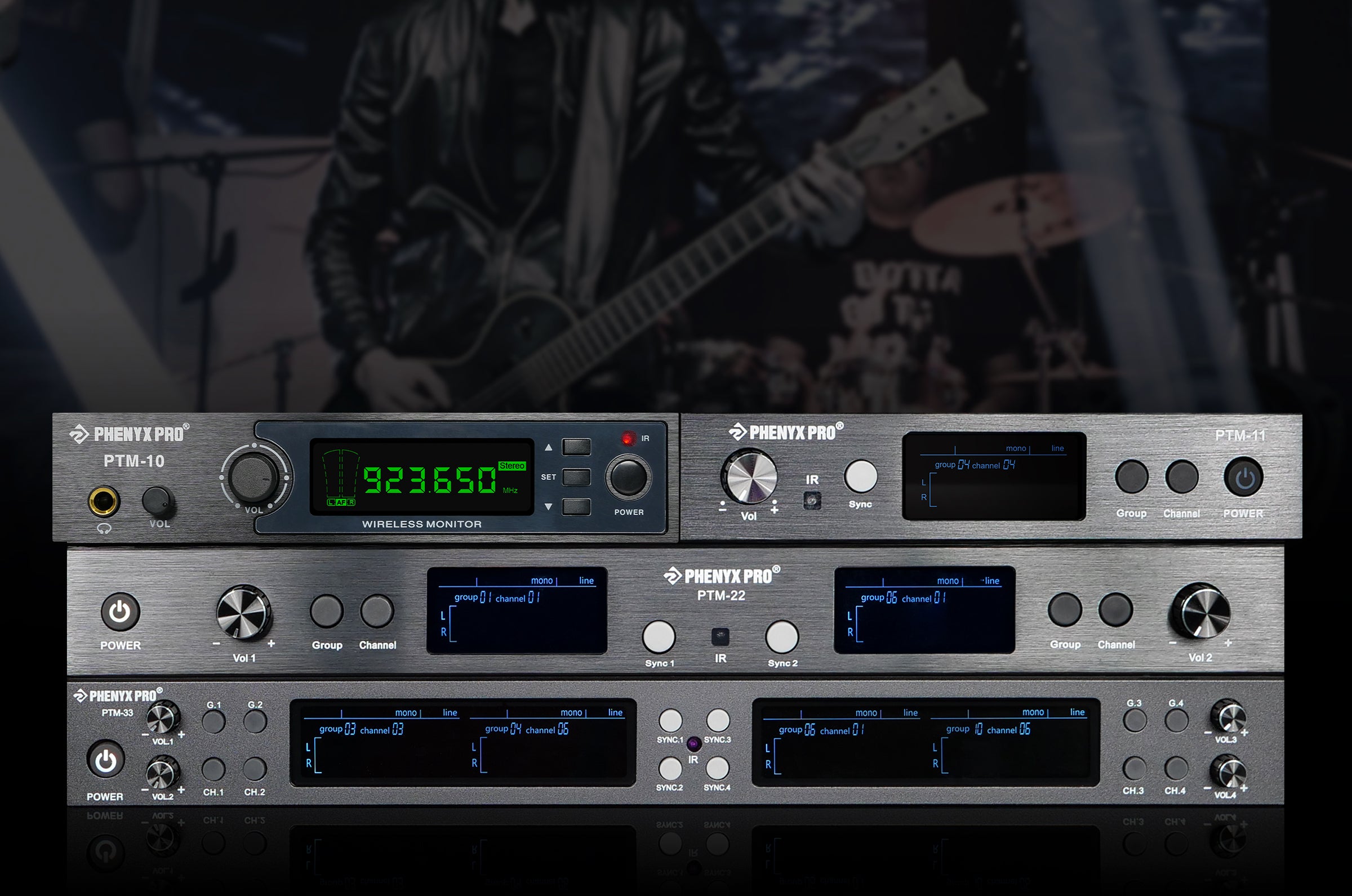
Mono vs. Stereo: The Ultimate Wireless IEM Buying Guide
Discover the monitoring solution that fits you with Phenyx Pro’s Mono (PTM-11/22/33) and Stereo (PTM-10) Monitoring Series. Dive into this insightful blog and explore their differences so as to make a suitable buying decision to gear up for your sound monitoring journey.
Learn More
New PTM-33 Mono In-Ear Monitor System Has Arrived
Discover the challenges traditional stage monitors pose to sound monitoring in live performances. In this blog, we introduce Phenyx Pro’s entry-level mono monitoring series as a solution and highlight the latest addition, the PTM-33 mono IEM system, which will soon be released in May. Learn how the innovative system can elevate your on-stage experience.
Learn More
